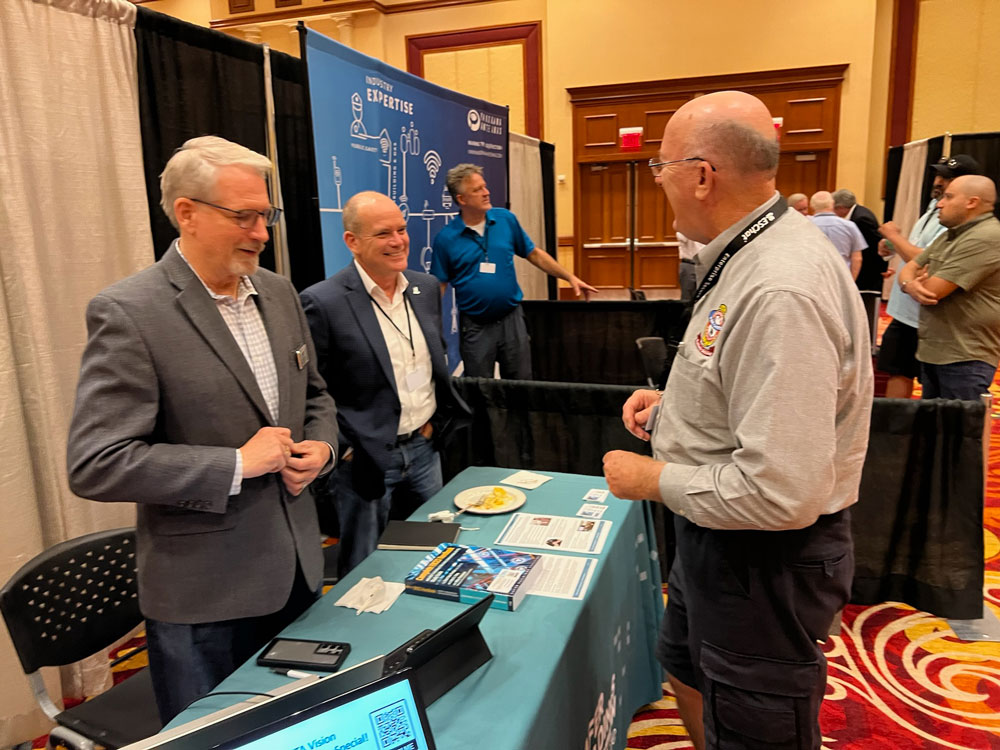By James Careless
Being able to get signals in and out of buildings is a top priority for first responders. This is why the Public Safety Broadband Technology Association’s Vision FirstNet Users Summit (PSBTA, Vision 2023) focused on this issue during its Las Vegas conference. The event was held at the South Point Spa and Casino September 25 to 28, 2023.


John Foley is Managing Director of the Safer Buildings Coalition (SBC), a not-for-profit organization who advocates for the elimination of in-building wireless dead zones. He was one of four speakers during the Vision 2023 session, ‘FirstNet & In-Building Communications’, which was held September 27th.
According to Foley, the dangers associated with inadequate in-building communications are literally life-threatening for first responders and the general public. “When you’re disconnected, you’re not safe,” he said. “For years we’ve advocated that you should be able to make a 911 call and be quickly located. Mass notification messages [also] need to get to people wherever they are so that they can be aware and respond to them appropriately. And most importantly, first responder communications must work inside buildings.”
Given how important in-building communications are for public safety, one might have thought that the problem would be eased in more modern structures. But the opposite is true: “This problem is actually getting worse as new buildings are being erected with new construction materials,” said Foley. “Things like high energy efficiency glass — they call it Low-E glass — actually blocks radio waves. So, it’s impossible to get signals in and out of the building through this glass. As a matter of fact, it is easier to get a radio signal through 12 inches of reinforced concrete than it is to get it through a pane of Low-E glass.”
Running Towards the Problem
John Foley was happy to talk about this issue at Vision 2023 because AT&T, FirstNet, and the SBC are working together to promote in-building installation standards that meet/exceed existing code/industry best practices, and to emphasize the importance of innovative solutions to the problem such as Z-Axis location technology — which adds vertical location data to cellphone calls.
This same company representative had also been attending the Mobile World Congress, which took place in Las Vegas at the same time. “All he heard there was how the wireless carriers were going to pull back on investing in in-building infrastructure,” said Foley. “And then he comes down here to Vision 2023 and hears that not only are AT&T and FirstNet investing in building coverage and having a deliberate strategy to build in-building coverage, but that the FirstNet Authority is devoting reinvestment dollars into products like AT&T’s Cell Booster Pro. So, where half the industry is moving away from investing in in-building coverage, AT&T and FirstNet are running towards it.”
A Solvable Problem
The life-and-death problems associated with inadequate in-building communications are serious indeed, but there is some cause for hope. Besides the efforts of FirstNet and AT&T to address this issue through technology, government is trying to help out as well.
For instance, “fire and building codes require that building owners test for this and correct it where there’s a problem,” Foley said. “As a matter of fact, right here in Clark County, Nevada, every high-rise casino property resort property here has been required to put these systems in.” This change was pushed by the local fire department following the 2017 mass shooting staged from inside the Mandalay Bay hotel, he explained.
Good for the Community, Good for Business
As far as John Foley is concerned, providing adequate in-building coverage is not just a social good but an economically viable enterprise as well — and apparently, he is not alone in this belief.
“I think PSBTA and Safer Buildings share a common principle,” said Foley. “We want to protect life and property, but we also understand that there has to be a commercially feasible model that has to be there. We want to help solve the public safety problem and the gaps in public safety communications. But it should be done in a way to make a living as well. And so, finding that balance of helping industry do well while doing good is a very fulfilling thing for all of us.”
John Foley added that this problem needs to start being addressed immediately, because the number of U.S. buildings with inadequate coverage today stands at about a million. “If we were able to do 10,000 buildings a year, it would still take us a hundred years to get all those buildings corrected,” he said. “So, we have to establish some priorities.” To this end, Foley would like to see K-12 schools get fast-tracked for these improvements, along with “high value targets” such as large venues and shopping malls.”


